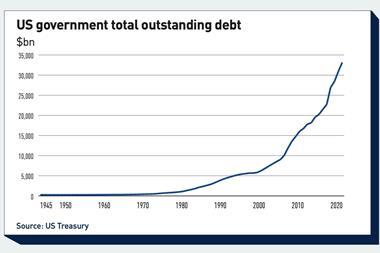The default fund for Sweden’s premium pension system, AP7, decided to allocate 4% of its SEK 25bn (e2.7bn) portfolio to hedge funds in 2001. This was one half of an 8% allocation to alternative investments that also included a 4% allocation to private equity.
Richard Grottheim, executive vice-president of AP7, says the decision followed an ALM study that showed that the fund would benefit from investing in alternative assets.
“The hedge fund strategy should be seen as a combination with private equity that was intended to increase the risk and the expected performance for return. Hedge funds in this strategy were a means of reducing risk, but have a somewhat higher return than a fixed income instrument.
In 2002 the fund chose two funds of hedge fund managers: the US manager K2 and the Swiss manager EIM to run two SEK500m (e55m) fund of funds portfolios. Both were chosen for their different investment strategies. K2 takes an aggressive investment approach that includes long-short strategies, while EIM invests in risk neutral strategies like convertible arbitrage.
“The purpose of that was to create a mix between has two that is considered a moderate strategy for hedge funds.” Grottheim explains.
K2 was expected to produce an annual return of between 12% and 15%, while EIM was set a target of 8-12%. Grottheim says that collectively the managers have performed in line with these targets.
“For these two managers in combination the performance was in line with expectation. We noticed that in the beginning K2 had a lower than expected performance while EIM has a higher than expected performance. But on the other hand, in the last year it’s been the opposite.”
K2 and EIM are given complete freedom to choose their managers, he says, “The only thing that we have some control on is the strategy mix. We have a framework that says that K2 should not be less than 50% into long short strategies and EIM not less than 50% in arbitrage type strategies.”
The aim, he says, is to prevent ‘style drift’ and ensure that the managers stick to their respective investment strategies.
AP7 has no plans to change its fund of hedge funds investment strategy by moving into direct investment in individual hedge funds, says Grottheim.
“So far we’ve been quite happy with the fund of funds route, especially as we generally rely quite heavily on an outsourcing strategy. If we switched into picking hedge funds ourselves, it would consume too much time and resources,” she says.
“Our experience is that although it is quite costly to have the fund of funds layer, it has worked out quite well so far.”
Nor does AP7 plan to increase the
allocation to hedge funds. Legally the fund cannot invest more than 10% in alternatives.
Grottheim agrees that early expectations of returns from hedge funds may have been too high, and is wary of
basing future expectations on past performance.
“If you take the past performance of a number of these hedge funds it was probably a little bit too good. That’s why we adjusted the assumptions that we had in our studies of the asset class.
“We think the performance in the market will be in line with the kind of assumptions that we have.”
Picking managers who can perform is essential, he says. “Manager selection is becoming more and more crucial in this, just as it is in public equity manager selection. It’s important that you pick the right one.”
Consultants played a significant role in the choice of K2, he adds.
Among the criteria for selection, performance ranked high, he says. “But even more it was important that we liked the investment philosophy and process, and that we felt comfortable with the team and the capability of the team.”
Monitoring the fund of hedge fund managers’ progress is done within the overall framework that AP7 has in place for reviewing all its 11 managers, says Grottheim “This has a basis in half-year meetings. Every six months we visit the managers and have a substantial financial review. With the hedge funds we will also have a monthly conference call.
“We will have a formal three-view review with the fund of hedge fund managers at the end of the summer, when we will see whether they have met their targets, and the criteria that we set up, and whether we should continue the relationship or not.”












No comments yet